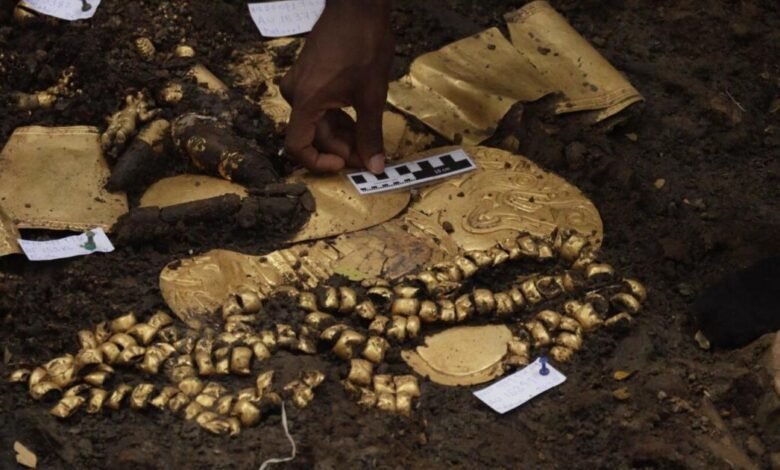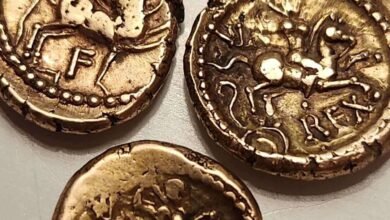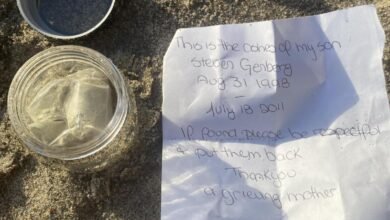Archaeologists in Panama find ancient grave full of gold treasures – and victims

Researchers have discovered an ancient man’s tomb full of gold treasures – and sacrificial offerings – at an archaeological park in Panama, officials announced Friday. The grave, estimated to be about 1,200 years old, marks the area where an elite chieftain was buried along with possibly dozens of people who died to accompany him into the “afterlife,” the country’s culture ministry said in a news release.
In the tomb of the El Caño Archaeological Park, scientists discovered a number of gold treasures, including bracelets, two belts made of gold beads, crocodile-shaped earrings, gold-plated earrings with sperm whale teeth and circular gold plates. Archaeologists have also unearthed earrings in the shape of a man and a woman, two bells, skirts made of dog teeth and a pair of bone flutes.
The grave likely belonged to a high-ranking chief of the local Coclé culture who was in his 30s, the El Caño Foundation said in a Facebook post. The foundation also released a video of the treasures.
Dr. Julia Mayo, director of the foundation and head of the archaeological project, said that in addition to the lord, there are up to 31 other people in the tomb who were “sacrificed to serve as companions.”
Mayo said the excavation of the burial site was not yet complete, so it could not be determined how many people were in the grave. She said the gentleman was buried face down on a woman’s body, which was typical of this type of burial.
Ministry of Culture of Panama
Linette Montenegro, national director of cultural heritage at the Ministry of Culture, said excavations at the archaeological park began in 2022. Montenegro said the gold and artifacts found in the tomb “have not only economic value, but also incalculable historical and cultural value.” “
The El Caño Archaeological Park was a necropolis built around 700 AD and abandoned around 1000 AD, the ministry said. It is located in Coclé Province, about 100 miles southwest of Panama City.



